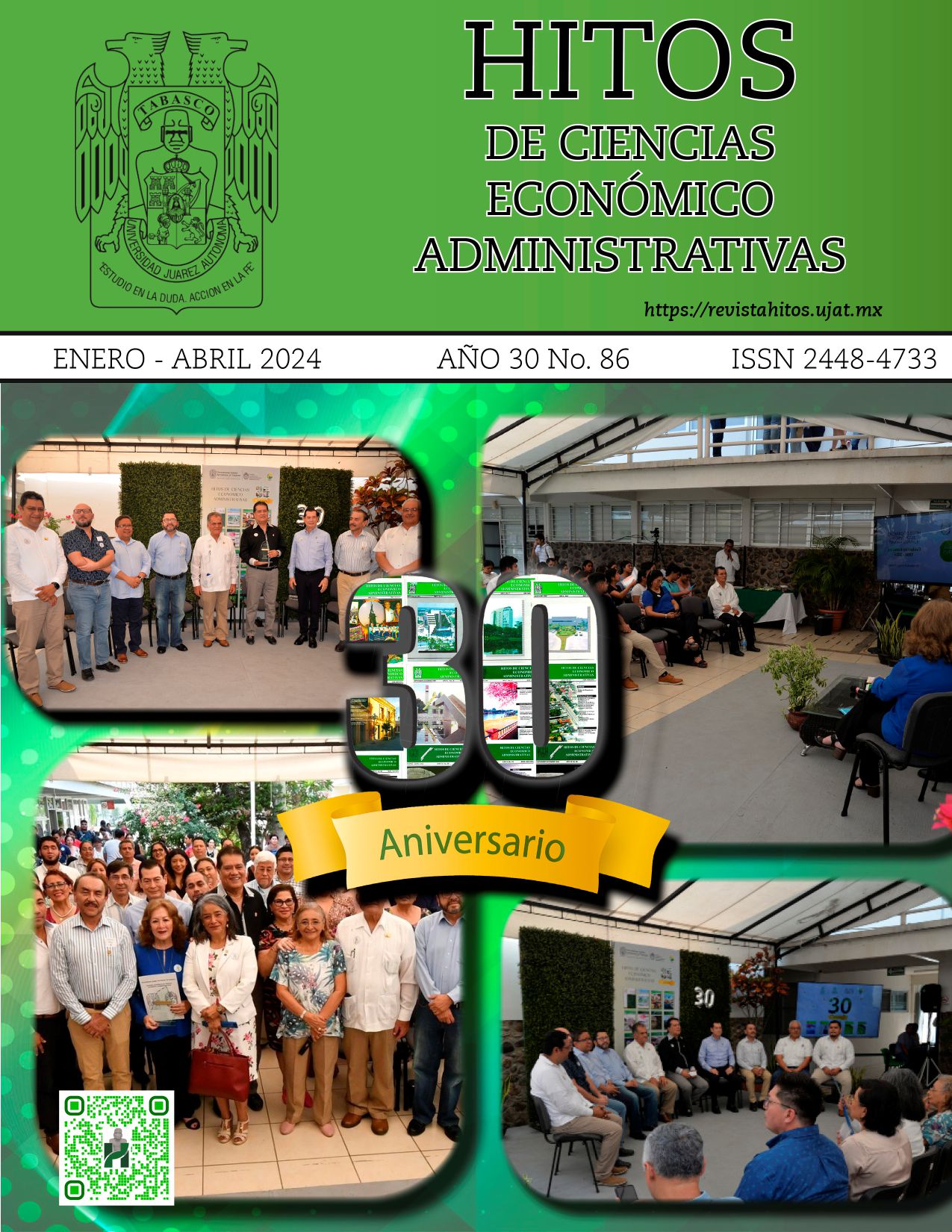Microbreweries Communication Strategies: The Influence of Digital Media on Craft Beer Consumers in Mexicali, Baja California, Mexico
DOI:
https://doi.org/10.19136/hitos.a30n86.6313Keywords:
Social networks, Digital marketing, Advertising strategies, Craft breweries.Abstract
OBJECTIVE: To evaluate the communication strategies of 7 craft breweries in Mexicali, Baja California; Mexico, which are based on the use and promotion on social networks, emails, web pages, or audiovisual content platforms.
MATERIAL AND METHOD: Through a survey, the perception of its clients was measured and examined through an exploratory factor analysis to extract the factors that make it up, corroborate the independence between them and explain the greatest amount of variance.
RESULTS: Three factors were formed that make up the communication strategy of microbreweries: development of loyalty, proximity to the consumer and presence on social networks. These describe the presence, frequency of use of digital media and the reach of the brand through interaction with craft beer consumers.
CONCLUSIONS: It is highlighted that there is little proximity to the consumer in digital media and companies do not have a defined communication strategy and use the various media interchangeably, without knowing the reach of each one.
Downloads
References
Aldrete, M. V. (2012). Medición de las tecnologías de la información y la comunicación en empresas de servicios de Colombia. Cuadernos de Administración, 25(45), 39-62. https://revistas.javeriana.edu.co/index.php/cuadernos_admon/article/view/4223
Armstrong, G. M. & Kotler, P. (2011). Marketing: An Introduction. Pearson.
Barón, M., Villalba, J. & Toro, M. (2013). ¿Qué transmite su marca? Estrategias para innovar desde la comunicación. Politécnico Grancolombiano.
Calderón, C. A. & Osorio, J. A. S. (2013). Manual de Teoría de la Comunicación: I- primeras explicaciones. Universidad del Norte. https://www.jstor.org/stable/j.ctt1c3pzs2
Fabrigar, L. R., Wegener, D. T., MacCallum, R. C. & Strahan, E. J. (1999). Evaluating the use of exploratory factor analysis in psychological research. Psychological Methods, 4(3), 272-299. https://doi.org/10.1037/1082-989x.4.3.272
Fernández-Jardón, C. M., Gutawski, R. S., Martos, M. S., Ariel, C. y Barajas, A. (2007). Visión estratégica de la Cadena Empresarial de la Madera de Oberá (Misiones). Editorial Universitaria de Misiones. https://editorial.unam.edu.ar/index.php/ediciones-especiales/product/297-vision-estrategica-de-la-cadena-empresarial-de-la-madera-de-obera-misiones
Fernández-Jardón, C. M. & Martos, M. S. (2016). Capital intelectual y ventajas competitivas en pymes basadas en recursos naturales de Latinoamérica. Innovar-revista de Ciencias Administrativas y Sociales, 26(60), 117-132. https://doi.org/10.15446/innovar.v26n60.55548
Garrido, F. J. (2008). Comunicación de la estrategia: La efectividad está en la dirección. Grupo Planeta (GBS).
Garrido, F. J. (2004). Comunicación estratégica. Grupo Planeta (GBS).
Gutiérrez, V. (25 de agosto de 2019) La cerveza artesanal vive su mejor momento. El economista. https://www.eleconomista.com.mx/arteseideas/La-cerveza-artesanal-vive-su-mejor-momento-20190731-0009.html.
Kim, J. & Lennon, S. J. (2013). Effects of reputation and website quality on online consumers’ emotion, perceived risk and purchase intention. Journal of Research in Interactive Marketing, 7(1), 33-56. https://doi.org/10.1108/17505931311316734
Ley Alcoholes B.C. (09 de mayo de 2023). Congreso del Estado de Baja California ley para la venta, almacenaje y consumo público de bebidas alcohólicas del estado de Baja California. Última Reforma P.O. 26, Número Especial. chrome-extension://efaidnbmnnnibpcajpcglclefindmkaj/https://www.congresobc.gob.mx/Documentos/ProcesoParlamentario/Leyes/TOMO_II/20230509_LEYVEALCO.PDF
Martín, J. (1998). De los medios a las mediaciones. Comunicación, cultura y hegemonía (5ª ed.). Convenio Andrés Bello.
McDaniel, C. & Gates, R. (1999). Investigación de mercados contemporánea. Thomson South-Western.
Montoya, V. & Luis, J. (2009). El diseño y uso de indicadores de comunicación en las organizaciones antioqueñas. Anagramas Rumbos y Sentidos de la Comunicación, 7(14), 81-92. https://doi.org/10.22395/angr.v7n14a5.
Orense, M. & Rojas, O. (2010). SEO Cómo triunfar en buscadores. ESIC Editorial.
Ortega-Gaucin, D. & Peña-García, A. (2016). Análisis crítico de las campañas de comunicación para fomentar la “cultura del agua” en México. Comunicación y Sociedad, (26), 223-246. DOI: https://doi.org/10.32870/cys.v0i26.1171
Oviedo G. M., Expósito, M. M. & Castellanos‐Verdugo, M. (2015). Social Media expansión. A challenge for marketing management. Contabilidad y Negocios: Revista del Departamento Académico de Ciencias Administrativas, 10(20), 61-71. https://doi.org/10.18800/contabilidad.201502.004
Pelham, A. M. (1997). Mediating influences on the relationsmp between market orientation and profitability in small industrial firms. The Journal of Marketing Theory and Practice, 5(3), 55-76. https://doi.org/10.1080/10696679.1997.11501771
Quispe, E. R. & Quintanilla, G. (2018). Barreras por las que la industria de cerveza artesanal no despega en el Perú. Revista Industrial Data 21(1). https://doi.org/10.15381/idata.v21i1.14911
Sodré, M. (2002). Muñiz Sodré: La forma de vida de los medios. Revista Pesquisa. Edición 78. FAPESP.
Treviño, R. & Martínez, R. T. (2010). Publicidad: comunicación integral en marketing. Mc Graw-Hill.
Townsend, J. & Figueroa, J. (2022). Digital transformation models in the management of commercial companies. Cooperativismo y Desarrollo. 10(2), 407-429. http://scielo.sld.cu/pdf/cod/v10n2/en_2310-340X-cod-10-02-407.pdf
Uceda, M. G. (2011). Las claves de la publicidad. ESIC Editorial.
Yuan, S. & Lou, C. (2020). How social media influencers Foster relationships with followers: The roles of source credibility and fairness in parasocial relationship and product interest. Journal of Interactive Advertising, 20(2), 133-147. https://doi.org/10.1080/15252019.2020.1769514
Downloads
Published
Issue
Section
License
Copyright (c) 2024 Universidad Juárez Autónoma de Tabasco

This work is licensed under a Creative Commons Attribution-NonCommercial-ShareAlike 4.0 International License.
As a requirement for the manuscript, the author is requested to provide the Copyright Assignment Letter, so that the Journal has the publication rights and to avoid plagiarism.
PLAGIARISM POLICIES
The Editorial Board of the Journal HITOS DE CIENCIAS ECONÓMICO ADMINISTRAIVAS has the authority to reject in the review process any manuscript that does not have adequate citation in the documents consulted in its scientific research work, which can be considered as plagiarism behaviors. Likewise, the referees carry out the plagiarism review using specialized software, such as iThenticate, among others.
COPYRIGHT POLICIES
Authors who have publications in the journal accept the following terms: • At the time the manuscript is accepted, the author transfers the copyright to the Journal HITOS DE CIENCIAS ECONÓMICO ADMINISTRATIVAS.
- The authors may make additional agreements for non-exclusive distribution of the published version of the article (e.g., including it in an institutional repository or publishing it in a book) provided that the initial publication in this journal is indicated.
- Authors are allowed and recommended to publish their research work on the Internet (eg, institutional or personal files), which would allow more beneficial exchanges to increase the citation of the published work.
This work is licensed under Creative Commons Attribution-NonCommercial-NoDerivatives 4.0 International





